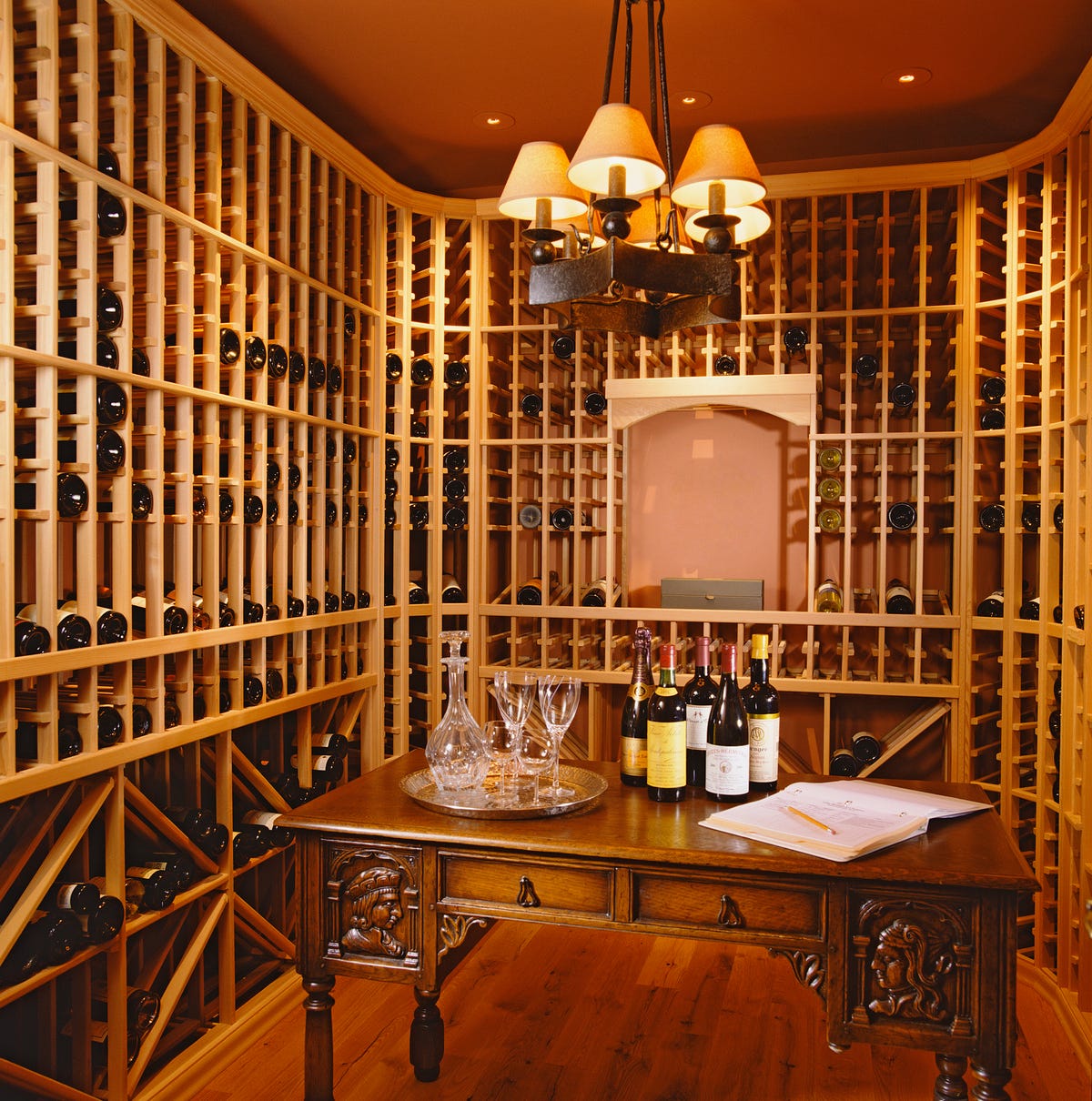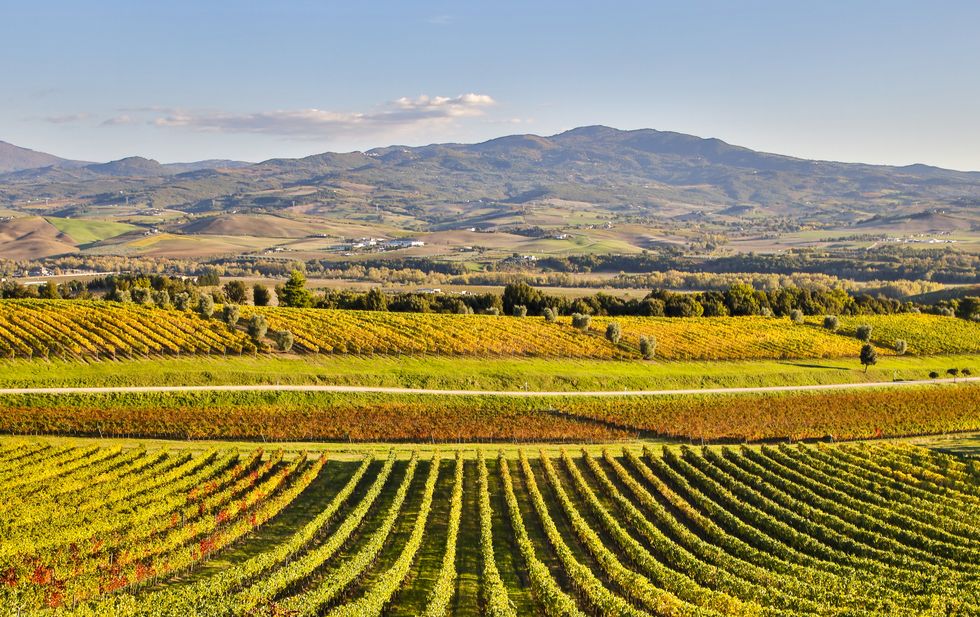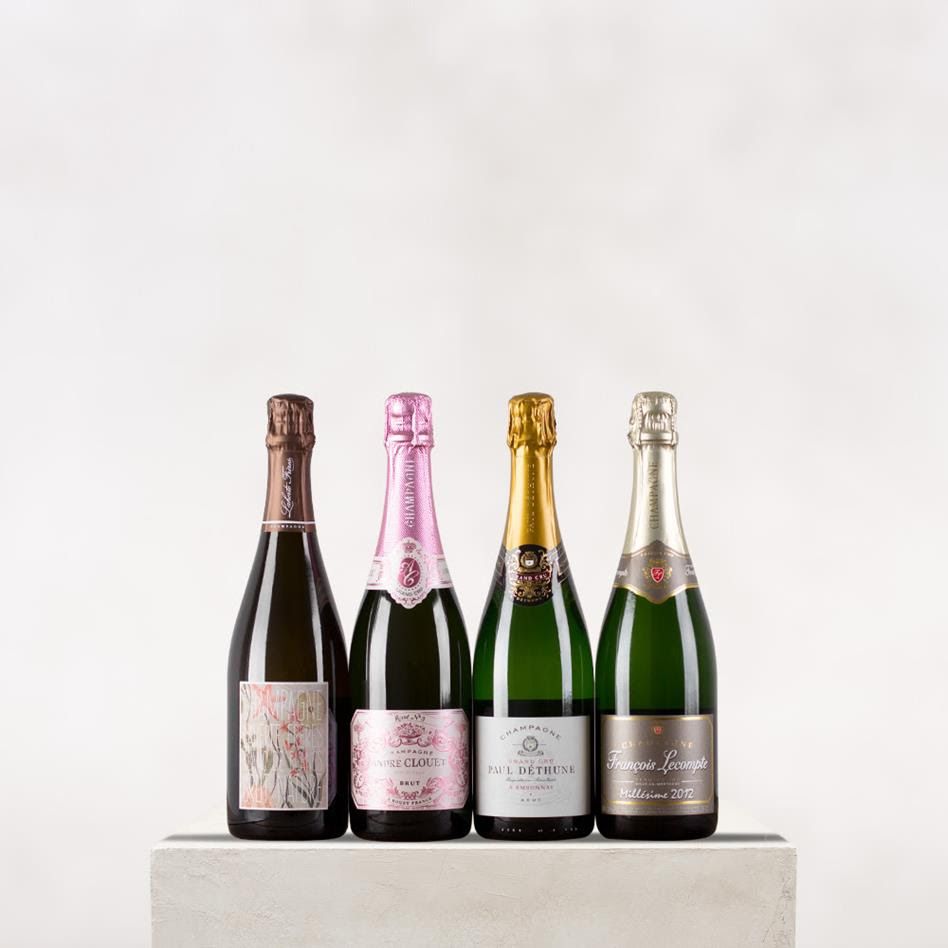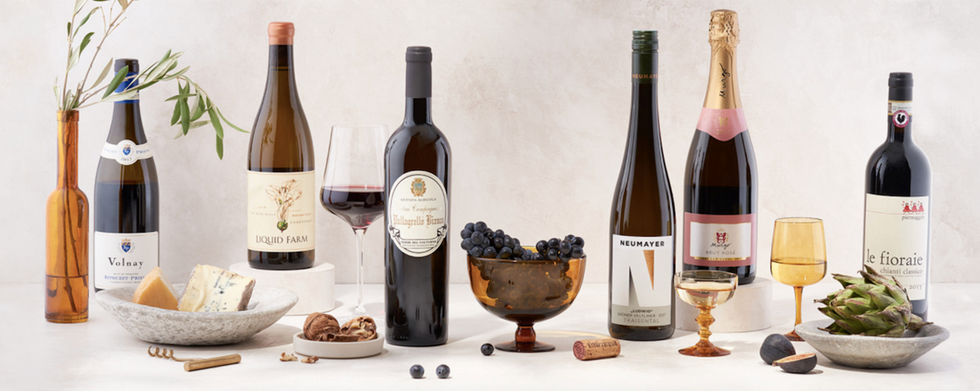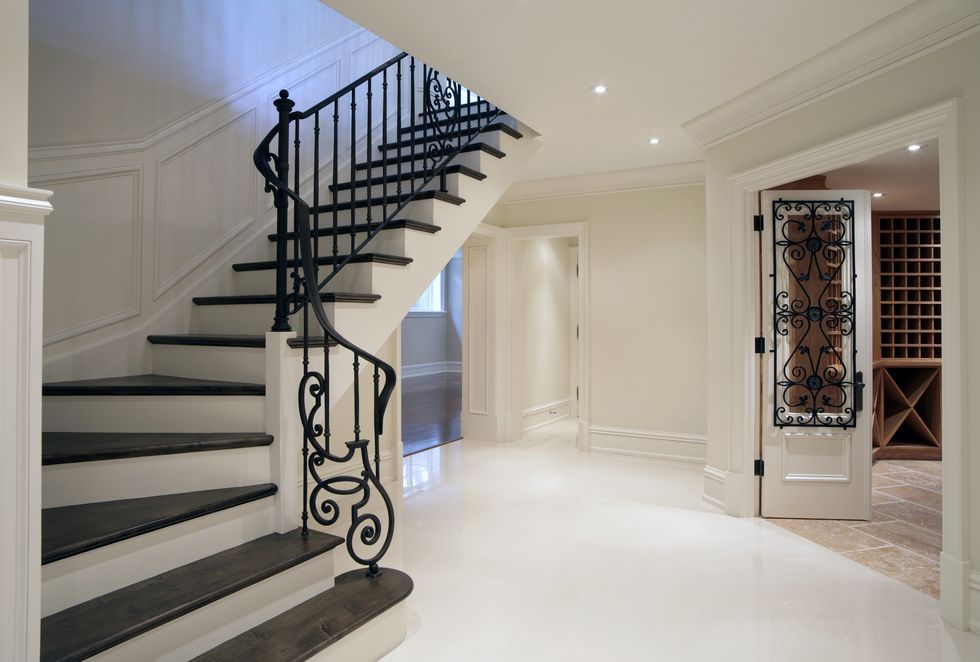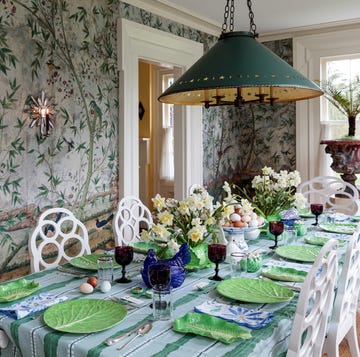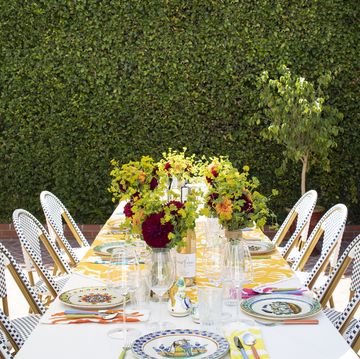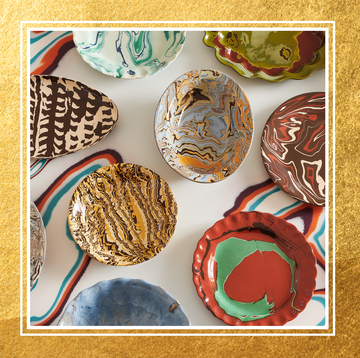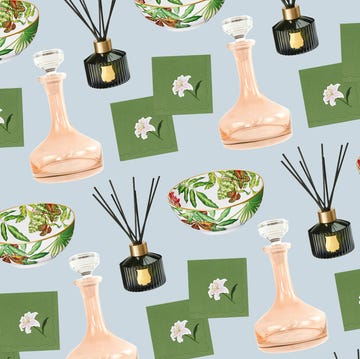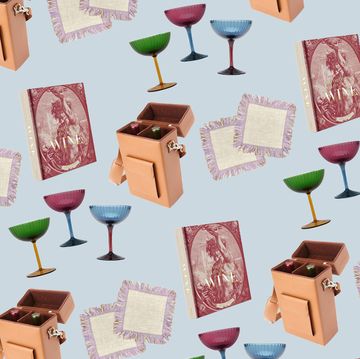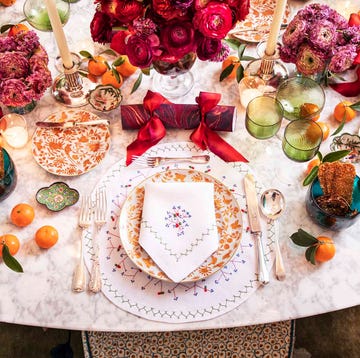Whether you've been a connoisseur for years or the pandemic has allowed you extra time to discover a new passion, wine collecting is an exciting way to not only learn more about the historic beverage, but also refine your palate, boost your hosting prowess, discover more of our beautiful world, and even make a major profit. But where to begin?
Wine collecting is certainly not for everyone, as it requires plenty of research, funds, and care, but it is an extremely rewarding pursuit for those passionate about wine's history, future, and ability to elevate any occasion. We sought out Master Sommelier and SommSelect Co-Founder Ian Cauble along with Lydia Richards, certified sommelier, founder of Vino Concierge, and co-founder of Hispanics in Wine to help you embark on a journey to become a successful and savvy collector.
What to Consider Before Starting a Wine Collection
"Starting a wine collection is a romantic idea, but it takes a lot of budget, years to develop, and it's not as easy as you might think," says Richards. "My first suggestion for anyone considering it is to determine your purpose. Is it a passion project where you focus on what you want to drink and take close care of your wines or is it for profit?"
More From Veranda

Richards says that whichever your motivation for starting a wine collection is, it's going to require time and money up front, as you'll want to purchase bottles that are both capable and benefit from aging, and 90 percent of all wines don't meet this criteria. You'll also need plenty of space to store your wines, whether that's building out a cellar, investing in a few top-quality wine fridges for your basement, or paying a monthly fee to store your wine in a specially designed warehouse. However, if you have the capital, space in your home (or a willingness to pay for monthly wine storage), patience, and a hunger to learn, there are plenty of ways to make starting your collection less daunting.
Seek Professional Help
If you're prepared to delegate quite a bit of time and money into creating a fabulous wine collection for enjoyment or as an investment, it's worth consulting an expert in this field to discuss your budget, taste preferences, and motivation behind collecting. Cauble says the private client services department at SommSelect, his highly lauded online wine club, shop, and education business, is primarily focused on helping people fill their cellars right now because today's emerging collectors want the best advisers, and a sommelier is your best bet for finding, well, the best bets in wine. He says working with a sommelier can actually save you some money in the long run.
"The great thing is, a lot of my favorite wines of the world are between $45 and $55, and if you buy well and have the right consultant, you can fill your cellar with a bunch of brilliant wines that age incredibly well and will continue to drive up in value," says Cauble.
Those lacking extensive wine knowledge can end up making some unwise investments. For example, Cauble says 2014 was a wet year for Italy, and you d0n't want to stock your cellar full of fabulous 2014 vintages because they won't age as well as others, but not just anyone would know this. Additionally, while he and Richards both advise subscribing to and perusing respected wine publications to discover the next great collectible bottles, those wines with the highest ratings aren't always the best for collecting. Most are likely at their best now and won't be after a decade or longer, so having the expertise of a sommelier can help you determine which wines are truly collectible and age-worthy for building the ultimate cellar.
Choose Your First Wines Wisely
Where does one begin wine collecting with so many varietals, regions, appellations—not to mention sub-appellations? Richards's advice, whether you're collecting for passion or as an investment, is to choose bottles that you like to drink or would serve at your own gathering, letting other people stock up on the bottles of varietals you don't like as much. She and Cauble both agree that you'll never go wrong by seeking out old-world favorites.
"Starting a collection with the classic wines of the world is the best way to build," says Cauble. "Just like if you have a music collection, you want a broad range of hits so that, depending on the mood, you can put just the right CD in, and the same goes for wine. You should have the classic wines and a selection of five to 10 producers of 'new wave' Napa, and it's fun to have new and old world examples of the same wines, like Cabernet Sauvignon."
These classic wines are primarily from France and Italy. When it comes to France, seek out Bordeaux's Cabernet Sauvignon and Merlot, the Loire Valley's Sauvignon Blanc and Chenin Blanc, Champagne's namesake bubbly, Burgundy's Pinot Noir and Chardonnay, Sancerre's namesake white, and Beaujolais's Gamay. Italy's top classic wines come from Barolo, Barbaresco, and Brunello di Montalcino. Other old-world favorites worth investing in are Spain's Rijoa wines, Germany's Riesling, and Austria's Grüner Veltliner.
"It's also about tasting a lot and seeing what you do and don't like," Richards says. "Sometimes I'll be hosting a tasting where people realize they don't actually like older wines and that should affect the way you collect. If this is a personal collection, it may require more tastings and replacing as you go along."
However, Cauble says, the more you taste and explore wine, the more your palate will change, eventually favoring earthy over sweet wines. He says the American sweet tooth will naturally gravitate towards a young Zinfandel at first, but most people will evolve in their taste preferences, eventually favoring acidity, minerality, tannin, and structure, which makes Barolo, Barbaresco, Burgundy, and the other old-world wines such long-standing favorites–and the most beloved by sommeliers.
"As you go on, and everybody’s palate I know has done this, you start to go into the dirt," says Cauble. "The more wine you drink, the more you tend to crave the flavor of the earth and lean into wines like red burgundy, which is Pinot Noir grown in some of the great terroirs of the world, versus a fruit-forward wine from the Sonoma coast. Those wines are still delicious, but you may want to drink the more earthy wines with the smell of walking through a cold forest and dirt, dried leaves and fresh rose petals with all these high tone, savory aromatics of crushed rocks, dried cherries, and more umami-driven things like mushrooms. Over time people gravitate, and most roads lead to Burgundy."
He says if you talk to any of the world's great wine professionals, most will say their favorite wine to drink is Burgundy or Barolo because over 10 to 20 years, the most pleasure you'll get from a glass will be from many of the top old-world appellations. You can also find this from new world Oregon or California wineries, but it's a small percentage of wines made in a certain style.
Choosing Collectible Wines
Now that you know to opt for the classics, along with a few favorites and California bottles, it's time to ensure you're choosing the ones that are truly collectible, with a little room for personal preference and hosting-ready options.
"Look at vintage reports and historical pricing for wineries you're interested in," says Richards. "Of course, if you want something truly special for an occasion or to make your collection more valuable, I suggest checking auctions from Sotheby's and Christie's, which also have great historical records."
Vintage reports can be obtained easily through respected wine publications, such as Wine Spectator, Vintus, and Wine Advocate, says Richards. These magazines gather information from all the regions and wineries to determine which have the best selling potential and will be the most drinkable.
"It's like stocks and future predictions, but less risky because the market actually follows those rules for the most part," says Richards.
Cauble says that an age-worthy, collectible wine usually has "freshness of acidity," and plenty of structure, or tannin. You may not like some of these classic old-world wines so much in their infancy, but he says that just like humans, old-world style wine matures and can have a long lifespan with proper care. They are built for the long term and are often not great until at least seven or eight years later—some even need 10 to 15 years. He says you can still drink Bordeaux wines from 1949 right now that taste fantastic.
"This is why I sometimes have a problem with wine scores, because a lot of the time, the higher the score, the richer and riper the fruit, which means the wine won't age more than seven or eight years after the vintage," says Cauble. "There are so many great 90-point wines out there that will be such better values in the end because they have more acid now but may be able to age way better than the top-rated ones of today."
However, he says this is not the case 100 percent of the time, so be sure to discuss the top-rated wines you're interested in purchasing with an expert to determine if they will be age-worthy and are worth the investment for the long haul. A few of those producers who will often both get a top score and age well include Château Lafite Rothschild, Château L'Évangile, and Domaine Romanée Conti.
"A lot of really ripe, new world wines age like child actors, while the classic wines of the world aren't great child actors, but they will be absolutely brilliant at 20 years old," says Cauble. "Fill your cellar with these old-world foundations as 70 to 80 percent of your collection should be aging well for at least 8 to 15 years, some 20 to 25 years, and the rest can be those Napa favorites that will sit well for two or three years but then need to be consumed and replaced."
A Note on Natural Wine
While natural wine is an exciting movement, and it is the way many old-world producers have made their products for generations, it's not the best route for creating vast, age-worthy wine collection, says Cauble. Since natural wine is different from just organic or biodynamic options in that it's not made with sulfur, it likely won't have a long life in the cellar, even if it's grown in an old-world appellation and should be collected by enthusiasts with the intent of drinking within two years.
How to Buy the World's Best Wines
Besides top auction houses like Sotheby's and Christie's, Richards also recommends Liv-ex, a global, online marketplace for the fine wine trade that offers trend reports and determines the market price of your collection, along with being an excellent place to purchase some of the world's best bottles. Auction houses not only feel familiar for those who collect antiquities and art, but they offer an incredible education the bottles you're purchasing, along with other appellations and vintages.
When it comes to buying domestic wines, it's pretty simple to buy directly from the producer, but Cauble advises purchasing in the winter months so that the weather won't affect the quality of your purchase in the shipping process. However, he suggests only participating in a wine club if it's with a producer you really love and you will be able to drink your shipments within two years, since most new world wines won't age well.
While both experts advise making wine experiences a part of your travel itineraries, purchasing a few cases from the winery you fell in love with while jaunting through the South of France isn't so easy. The best European producers won't sell directly to the consumer and instead sell to agents, who sell to distributors, who sell to retailers, who then make these wines accessible to the consumer. However, making friends with your favorite neighborhood fine wine shop is an important part of becoming a good collector. They will likely be helpful in ensuring you can order the wines of the world that are most exciting to you.
SommSelect is a highly respected marketplace and wine club that offers a breadth of education on the best wines of the world, as well as daily deals on his team's favorites, all of which offer free shipping. Especially if you're considering selling a bottle down the road or will want to appraise your collection every few years, it's important to buy from the right sources to ensure you're getting the bottles you paid for—and that others will be able to understand its value.
"You can buy an amazing bottle, but if you don't have the right documentation or cellar to preserve it, the bottle wont be worth anything," says Richards.
Creating The Perfect Home for Your Wine Collection
Cauble says that wines are like people: some age well, and some don't. One of the best ways to ensure your wine collection only gets better with time is by investing in proper storage space. If your home has a basement, garage, oversized walk-in-pantry, or another cool space that receives little light, these could all be great locations for storing your wines if you don't want to build out a wine cellar. However, your wine environment should be created to be under the same conditions.
"Having great people, great food, and great wine all together is one of the great highlights of life, so a lot of people want to have access to great bottles just downstairs from the dinner table and are interested in having their own cellars," says Cauble. "If you don't wnat to build one, start with a Vinotemp, Euro Cave, or another temperature and humidity-controlled unit."
While a wine fridge is a fantastic addition to the kitchen when it comes to weekly drinking, Cauble advises splurging for a few 350-bottle Euro Cave units, especially if you live somewhere that's warm much of the year. Then, your valuable wine collection has some insurance if your power goes out and you're on vacation or out for the night. Otherwise, that $800 case of Barolo or that 1985 Bordeaux you've been saving for an anniversary could be at risk of spoiling. He says this is why Europeans have continued to build their cellars underground.
"The best cellars are 48 degrees under the earth with high humidity and no light," says Cauble. "When looking for wine storage, you want to be able to keep the humidity at 70 percent and temperature at 55 degrees with no light."
If you're short on space or would prefer to have someone else tend to your precious wine collection, Richards advises seeking out specialty wine storage warehouses in your area. She used to work for The Wine Cellarage in New York City that functions as both a shop and storage space to protect and track your wines—they'll even receive deliveries from your auction purchases and retailers. These businesses also make it easy to receive your desired bottles when hosting an event, often offering same-day delivery, and will even provide analysis of your collection or a certain bottle whenever needed to make selling a cinch.
Sommelier's Top Picks for Building Your Wine Cellar
"Once people start collecting, it's an addiction so start light and don't fill the cellar all at once," says Cauble. "Focus on just 30 percent of your cellar at first, then enjoy some of those, keep drinking and trying more wines, and go from there, unless you have a really great sommelier guiding you."
Cauble says if you're buying on your own, be wary of buying too much too soon from one producer because chances are, you won't end up liking the same California wine five years down the road because your palate will change, unless you've been buying from them for 10 years. Even so, seek to have a well-rounded collection.
"Definitely go for the world-renowned producers if you're using this as an investment," says Richards. A few of her favorite wines to start with outside of the old-world set include Chateau Montelana, Caymus, and Stag's Leap Wine Cellars, all out of Napa Valley. Additionally, she says White Burgundy has become a hot collector item, vintage champagne will always be a best buy, and old world dessert wines like Sauternes and vintage port are wonderful investments and fun to explore.
Besides the old-world appellations and their top producers, like Château Lafite Rothschild, Château L'Évangile, and Domaine Romanée Conti, the Napa-based Chauble loves many of the local wines there, especially the ones that are dry farmed, organic, and biodynamic, with similar growing and production methods to the best French regions. Two of his favorite Napa producers are Dominus Estate and Frog's Leap. He also suggests trying Penfold's, Australia's oldest wine making estate, that offers both reds and whites.
"Yes, collecting wine requires lots of research and maintenance but people will always be curious about luxury items like wine," says Richards. "The past two years has been such a boom for most wine products because of their future earning potential. Sure, everyone and their mother is making a wine brand right now, but people will always be interested in wine no matter how crowded the market gets. The world of wine is so exciting to be a part of because it's that right mix of tradition and innovation, and it has become so involved with travel and gastronomy."
Lauren Wicks is a Birmingham-based writer covering design trends, must-have products, travel inspiration, and entertaining. She’s obsessed with globally inspired textiles, hosting dinner parties, and French cocktails.
